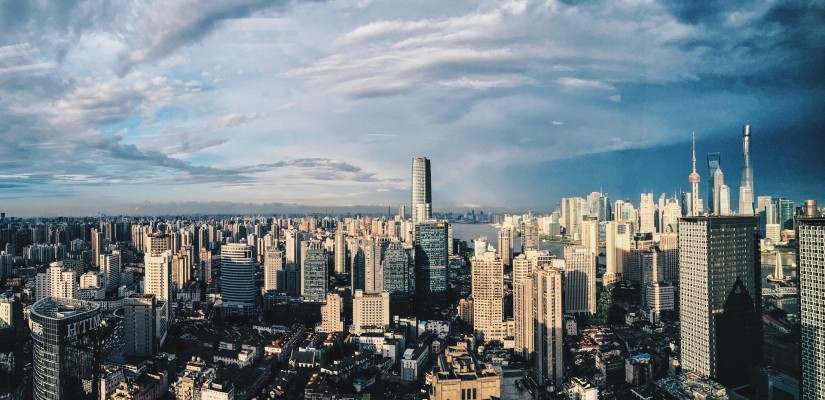On July 1, 2019, China mandated that its citizens take full responsibility for solid waste management by participating in a new mandatory recycling program. This new trash recycling legislation is the latest environmental move that China is making, after banning the importation of garbage from other countries. It is also taking steps to process even non-recyclable trash more effectively, which will be facilitated by the recycling program. Ultimately, it aims to solve the pollution and recycling puzzle that it has neglected for years and work towards building "Waste-Free Cities.”
The mandatory trash sorting rules first went into effect in Shanghai, the largest city in China. The Shanghai government has mandated that residents sort their garbage into four categories − “wet” garbage (household food waste), “dry” trash (residual waste), recyclable waste, and hazardous waste. Individuals are fined up to 200 RMB (US$29) if they fail to sort their trash properly, and companies risk a fine of up to 500,000 RMB (US$72,378).
As Shanghai residents had a difficult time understanding the new sorting requirements, technology stepped in to assist them. Alipay, the virtual payment App created by the top Chinese technology giant Alibaba, enables people to search their trash in the App. The app recognizes the garbage by using augmented reality (AR), image identification, voice recognition, and text information, and then helps the user identify the correct category for the proper disposal of each piece of trash. WeChat's mini-program provides a similar searching solution. Programs have also been created to incentivize proper sorting and recycling. These allow individuals to create their own unique QR code and collect reward points for sorting trash correctly, and the more residents recycle, the more reward points they receive. Later, the Beijing government distributed AI-powered trash bins in residential communities. These require people to scan their faces before throwing away trash. While this raises privacy and ethical concerns, they allow each person to be held individually accountable for the proper disposal of trash.
Since trash sorting legislation will soon become a nation-wide requirement, both individuals working in the waste-management industry and the industry itself must adapt. Historically, self-employed garbage collectors have been the primary human resource in the recycling industry − they manually sort recyclable trash and deliver it to the recyclable waste disposal plant. Experienced workers can quickly distinguish the different kinds of recyclable trash, allowing it to be further sorted into subcategories and then better degraded. This type of skill cannot be replaced by the new trash sorting regulations, which only require residents to separate the recyclable trash into very broad categories.

The new trash sorting rules provide two possible avenues of employment for these skilled workers. First, skilled workers could work in recyclable sorting centers, where workers need to re-sort the waste and ensure the right treatment for each type of trash. Second, these skilled workers could provide onsite services to residents who are not able to sort and properly dispose of their garbage. The onsite service is typically offered by private companies and can be easily requested through WeChat or Alipay App.
The new recycling requirements will also require the industry itself to adapt. One notable challenge in implementing the trash sorting program is that the sorted trash must be delivered separately to trash disposal centers. This posed a problem during a previous non-mandatory pilot trash sorting program, which was not ultimately successful as disposal facilities at that time were not equipped to process recyclable and non-recyclable waste separately, resulting in all trash being processed together.
In addition to its mandatory recycling program, China is taking steps to process even non-recyclable garbage in a more environmentally responsible way. Previously, China relied on landfilling and incineration as its two main types of disposal methods. These straightforward methods not only have limited capacity to process the increasing volume of trash, but also create harmful pollution. Although China has been turning to new facilities that burn solid waste to produce electricity, protests over the environmental impact of such waste-to-energy plants have happened more frequently in recent years. With more modern methods of incineration, the pollution could be reduced significantly, therefore leading an increased motivation for people to follow the trash sorting rules. In Shanghai, just prior to the introduction of the new trash sorting rules, the government closed two major landfills and launched a modernized, upgraded incineration power plant. It is the biggest waste-to-energy plant in the world and will process one-third of household waste in Shanghai annually. Eighty percent of the work is done by machine, and the process is monitored in a central control room. Beijing and Shenzhen also planned to close landfills during the implementation of mandatory waste sorting rules.
The new trash sorting legislation is expected to spread out to an additional 46 cities by late 2020 and will eventually go into effect in nearly 200 other cities by 2025. It is China’s attempt to solve its environmental woes. The legislation and subsequent changes are expected to increase waste-sorting awareness among residents and drive the reform of the waste and recycling industry.
